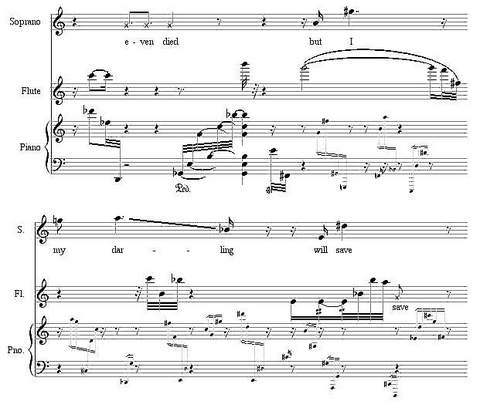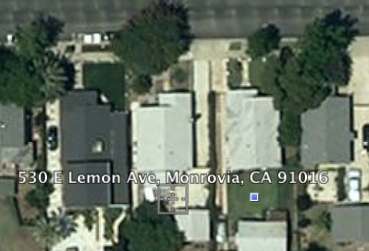Hans Otte: Das Buch der Klange (excerpt)
Harold Budd: Children on the Hill (long version, transcribed by me from a 1982 performance at New Music America)
Mamoru Fujieda: Patterns of Plants (excerpt)
Bunita Marcus: Julia
Meredith Monk: St. Petersburg Waltz
Elodie Lauten: Adamantine Sonata
Eve Beglarian: Night Psalm (world premiere)
John Adams: China Gates
Harold Budd: Children on the Hill (short version, from the recording)
Terry Riley: Be Kind to One Another
Kansas City’s NewEar ensemble will perform the following pieces:
Tom Johnson: Twelve for solo piano
Terry Riley: Autumn Leaves for flute, violin, alto sax, bass clarinet, cello, piano, percussion (the piece just after In C, only heard once since the ’60s)
Phill Niblock: Tow by Tom
Vladimir Tosic: Arios for cello and piano
Barbara Benary: Sun On Snow for soprano and mixed ensemble
Jakob ter Veldhuis: The Body of Your Dreams for piano and boombox
Tom Johnson: Narayana’s Cows for flute, violin, alto sax, bass clarinet, cello, piano, percussion (Tom Johnson, narrator)
Tom Johnson and Robert Carl will give keynote addresses. And there will be 49 papers presented, on topics from Feldman to Eric Richards to David Lang to Phill Niblock to Jim Fox to Julius Eastman and many others. I’m excited. The papers are listed below, in approximately the order presented, though we’re still moving things around. (Note the paper by my friend Dragana Stojanovic-Novicic: she’s reporting on a Serbian composer, Vladan Radovanovic, who claims to have been the first minimalist.) Or you can just go see everything at the official web site and register to show up and join us. The student rate, by the way, gets you into everything for 90 bucks, so it’s a steal.Â
‘The music you write is about the composers you like’: Intertextuality in the work of Louis Andriessen – Maarten Beirens (KU Leuven, Belgium)
Metamorphic Meanings? Exploring Glass’s Intertextual Soundtracks – Tristian Evans (Bangor University, Wales, UK)
‘Taking a Line for a Second Walk’: Mapping Intertextuality in Nyman – Pwyll ap Sion (Bangor University, Wales, UK)
Phill Niblock and identity in reductionism -Â Richard Glover (University of Huddersfield)
Phill Niblock: Documentation, Analysis, Listening – Keith Potter (Goldsmith College, London)
Minimalism and the Moving Image: The films and music of Phill Niblock – Rich Housh (University of Kansas)
Same Music, Different Perceptions? Steve Reich’s Six Pianos and Six Marimbas as Case Study – Kyle Fyr
Tehillim and the Fullness of Time – Gretchen Horlacher (Indiana University)
Early Steve Reich and Techno-utopianism – Kerry O’Brien (Indiana University)
Perceptible Processes in Reich’s Ostinati: Arch Form and Multiple Downbeats in
Music for Eighteen Musicians – Brad Osborn (University of Washington)Samples and the Material they create in Steve Reich’s City Life – Abigail Shupe (University of Western Ontario)
Good Trains and Bad: Steve Reich and the Holocaust in American Musical Life – Sumanth Gopinath (University of Minnesota)
Images of Lincoln: Glass’s Minimalist Contribution to American Historical Memory
of the Civil War – Thomas J. Kernan (University of Cincinnati College-Conservatory of Music)Meaning in minimalist opera: Investigating the subtext of Doctor Atomic – Sean Atkinson (University of Texas at Arlington)
Portraits of the Chinese Landscape in John Adams’s Nixon in China
Timothy Johnson (Ithaca College)From Arles to zaftig: an introduction to the operas of Michael Gordon – Jedd C. Schneider (University of Missouri – Kansas City)
Â
Disorientation and Loss as a Response to Arvo Pärt’s festina lente – David Dies“They Just Go Round and Round”: Circularity and Dystopia in The Truman Show – Rebecca M. Doran Eaton (The University of Texas at Austin, Texas State University-San Marcos)
A Postminimalist Analysis of Julius Eastman’s Crazy Nigger – Andrew Hanson-Dvoracek (University of Iowa)
Julius Eastman’s Musical Worlds – Ellie M. Hisama (Columbia University)
Becoming Temporal and Entropic: The aesthetics of time in Tenney’s Having Never
Written a Note for Percussion and Robert Smithson’s earth work – Joseph Di PonioDavid Borden’s Double Portrait: Minimalist Aesthetic With Linear Time – R. Andrew Lee (University of Missouri-Kansas City)
A Personal Encounter with the Shaman of Vertical Temporality: Charlemagne
Palestine – Phillip Henderson (The University for the Creative Arts)La Monte Young: Time and identity of the work – Jean-Pierre Caron
Reconstructing November – Kyle Gann (Bard College)
Mikel Rouse’s Failing Kansas – David McIntire (University of Missouri at Kansas City)
An Ethnography of Acoustical Positivism – Jeremy Grimshaw (Brigham Young University School of Music)
La Monte Young’s 1960’s: The Black LP – David McCarthy (University of Minnesota)
Process as Means and End in Minimalist and Post-Minimalist Music – Galen Brown
Prime Times – Paul Epstein
Beyond Drumming: Process in the Music of David Lang – Kevin Lewis (College-Conservatory of Music, University of Cincinnati)
Metal as a Gradual Process: Minimalist Rhythmic Practices in the Music of Dream Theater – Greg McCandless (Florida State University)
David Lang’s Postminimalist Work: the so-called laws of nature and the Influence of
Steve Reich – Andrew M. Bliss (University of Tennessee at Martin)The Fear of Forgetting: Decasia and Contemporary “Memory Culture” – Jason Hibbard (University of Cincinnati College-Conservatory of Music)
Morton Feldman, Proto-Minimalist
Brett Boutwell (Louisiana State University)Dialectic of Dialects: American Minimalist Composers Talk Tradition – Sara Melton (University of Cincinnati College-Conservatory of Music)
Minimal Music and the Influence of Abstract Expressionism – Elisa Weber (Florida State University)
Painting in Time and Music through Space: A Comparative Analysis of the Music of
Phill Niblock and the Art of Ad Reinhart, Mark Rothko, Richard Serra, and Carl Andre – Erika King (Bennington College)An artistic paradigm realised: Negative space, musical minimalism and
compositional technique – Christopher Garrard (University of Durham)Speaking Through Singing: The Spoken In the Vocals of Steve Reich’s Different
Trains and Arnold Schoenberg’s Ode to Napoleon Buonaparte, Op. 41 – Andrew McIntyre (Indiana University)“How shall we sing the Lord’s song in a strange land?” – John Pymm (University of Wolverhampton)
The Reductionist Model as the Forerunner of Minimalist “Action”: Six Two-part Chorales by Vladan Radovanovic – Dragana Stojanovic-Novicic (University of the Arts, Belgrade)
Jim Fox’s The City the Wind Swept Away: Considering Juxtaposition and Decay as
Structure – Scott Unrein (University of Missouri-Kansas City)Sample Savvy: Identification and Structure in Electronic Dance Music – Travis A. Allen (University of California, Santa Barbara)
Phasing and Form – Ryan Tanaka
Maximizing Minimalism in Michael Torke’s Four Proverbs – Kathy Biddick Smith
Eric Richards and the Empirical Search for Truth and Beauty -Â
Eric Smigel (San Diego State University)The String Theory of Repetition in Sound: From the mid-20th century to the Post digital – Greg Shapley (University of Technology, Sydney)


